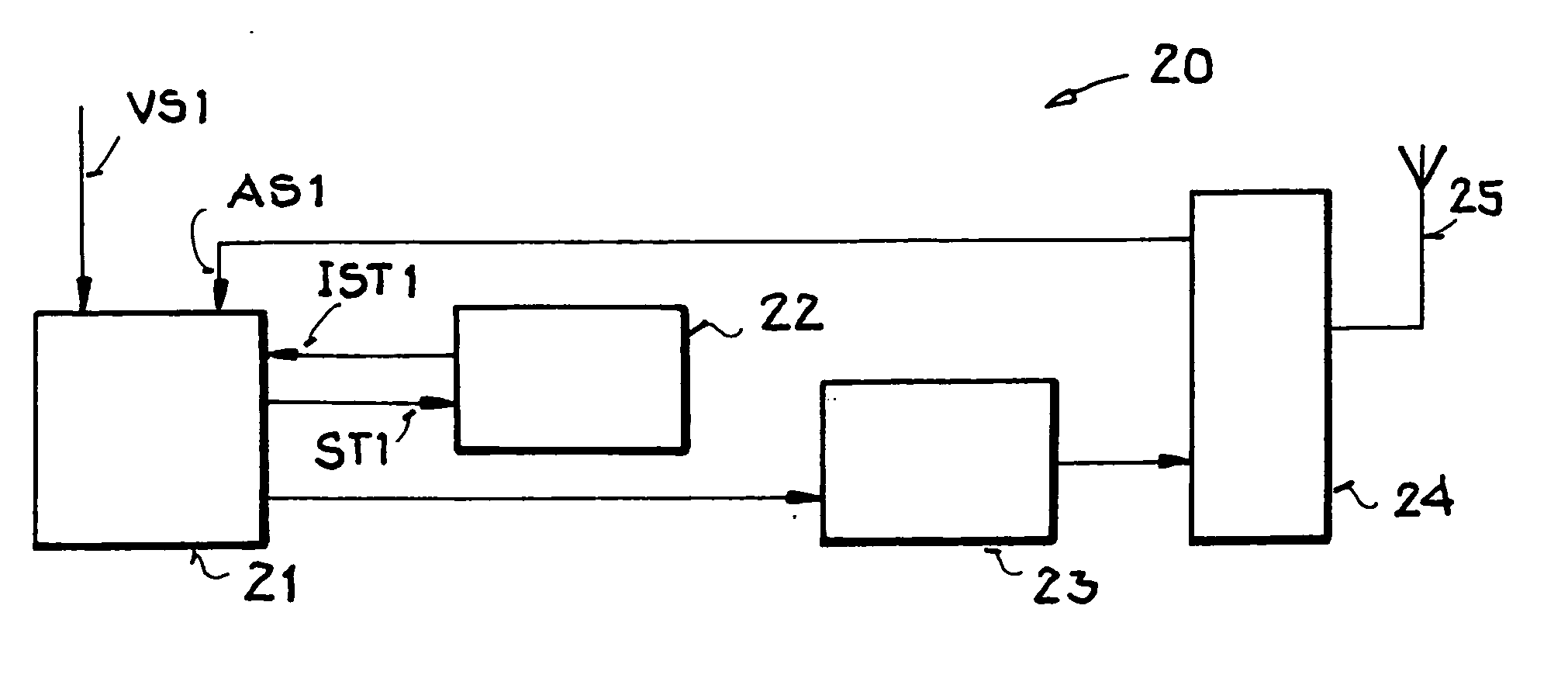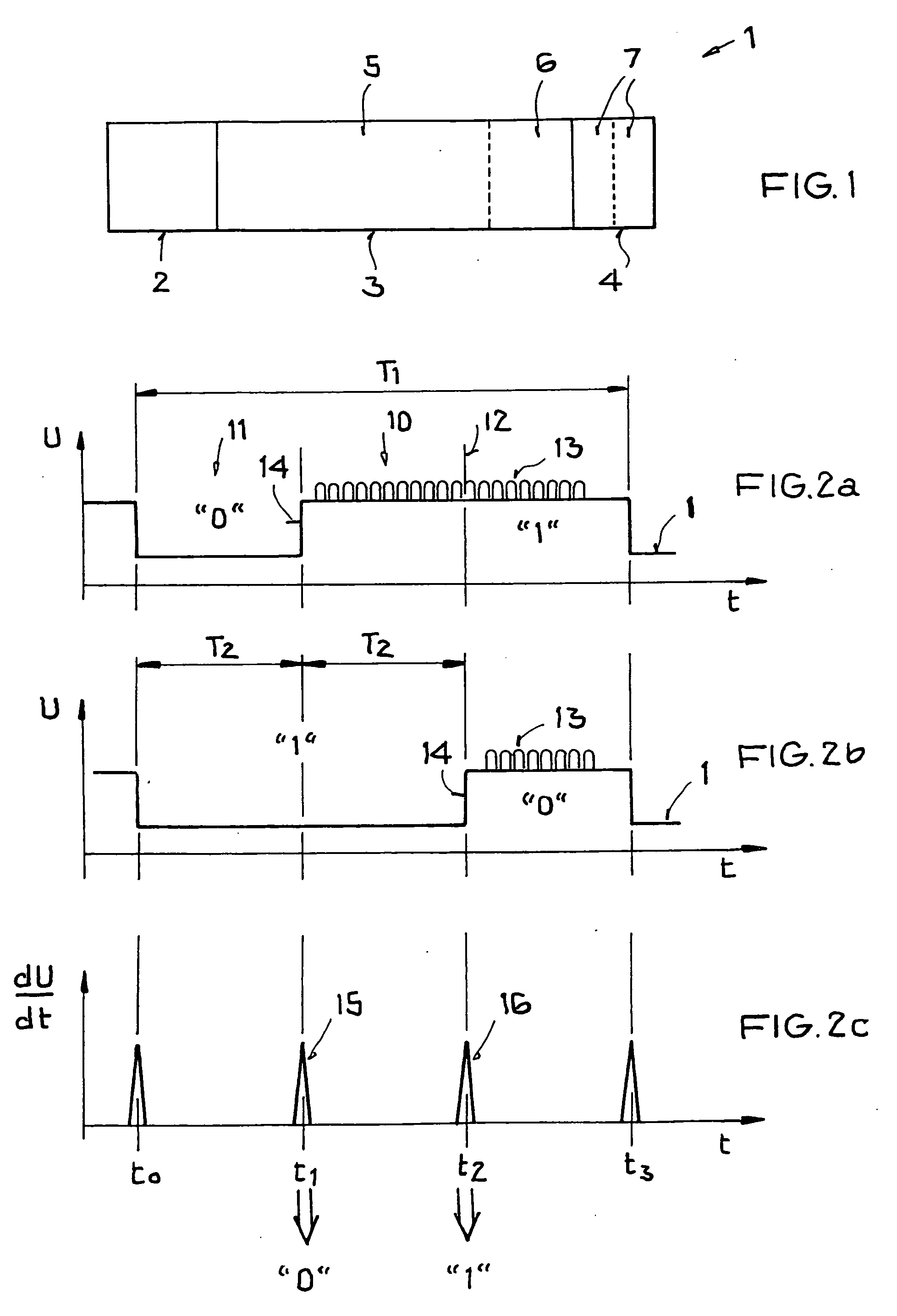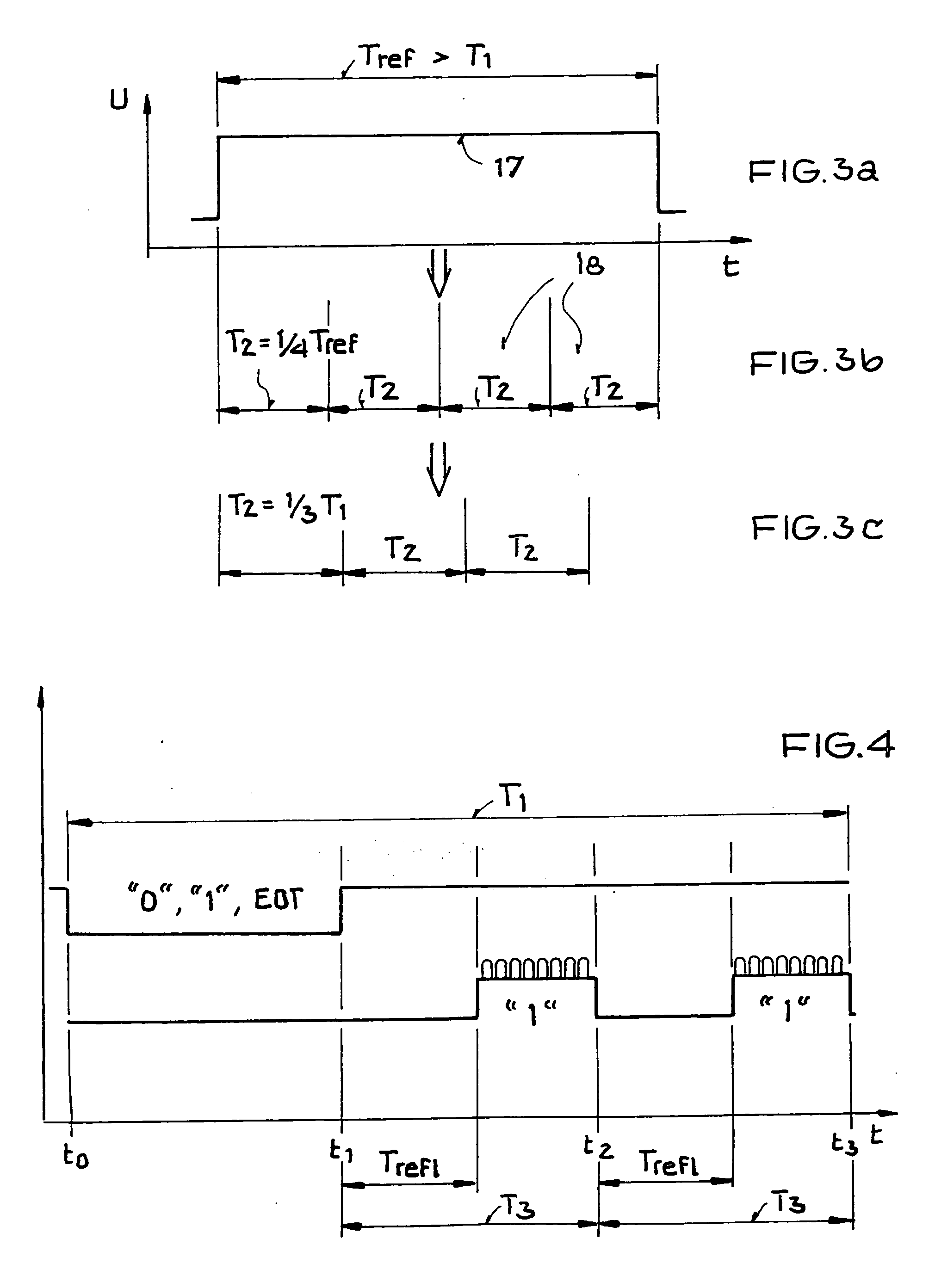Selection method for data communication between base station and transponders
a data communication and base station technology, applied in transmission, sensing record carriers, wireless commuication services, etc., can solve the problems of reducing the range of data communication, high power consumption, and the transponder typically does not know these points in time, so as to preserve the structure of the data communication protocol, minimize the current consumption of the transponder, and optimize the data transmission rate
- Summary
- Abstract
- Description
- Claims
- Application Information
AI Technical Summary
Benefits of technology
Problems solved by technology
Method used
Image
Examples
Embodiment Construction
[0052] In the drawings, like or functionally like elements, data, and signals are identified with the same reference labels, unless otherwise specified. The representations in FIGS. 1-4, and 6 each relate to a time sequence of a given data communication.
[0053] Firstly, FIG. 1 shows a basic structure of an information packet 1 such as is used for data communication between a base station and a transponder.
[0054] The information packet 1 has a header section 2, a middle section 3, and a trailer section 4. The number of data items to be transmitted and their identification, and in many applications control information as well, are defined by the header section 2. In particular, the header section 2 defines reference times that are used for further data processing in the middle section 3 or data field 5. The middle section 3 contains the relevant data to be transmitted, wherein the middle section 3 can also preferably be used for purposes of control in some applications. The middle se...
PUM
 Login to View More
Login to View More Abstract
Description
Claims
Application Information
 Login to View More
Login to View More - R&D
- Intellectual Property
- Life Sciences
- Materials
- Tech Scout
- Unparalleled Data Quality
- Higher Quality Content
- 60% Fewer Hallucinations
Browse by: Latest US Patents, China's latest patents, Technical Efficacy Thesaurus, Application Domain, Technology Topic, Popular Technical Reports.
© 2025 PatSnap. All rights reserved.Legal|Privacy policy|Modern Slavery Act Transparency Statement|Sitemap|About US| Contact US: help@patsnap.com



